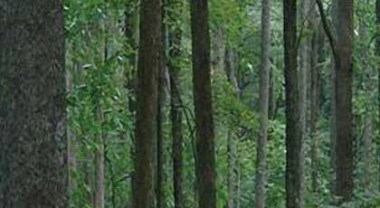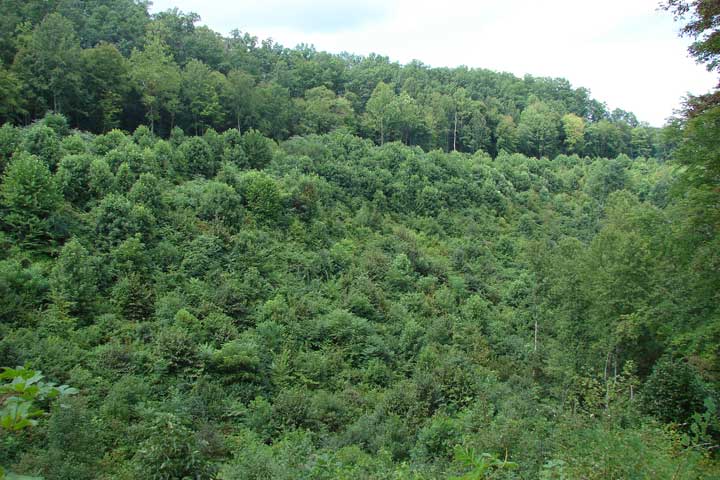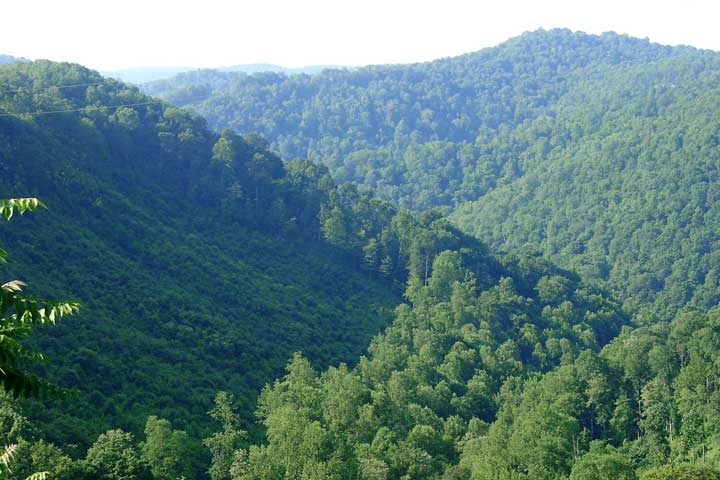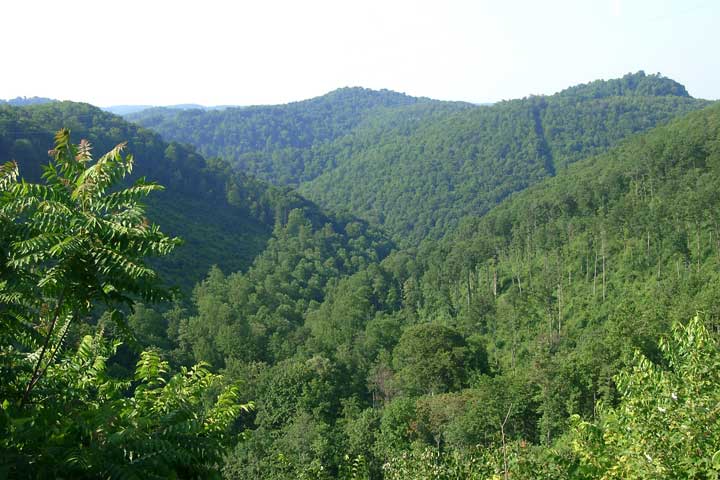Hardwood forestry is different from softwood (pine, larch, fir) plantations in that it seldom employs tree planting or fertilizers in regeneration plans because such investments will not be realized for a century or more. Instead, hardwood operations rely on four common “regeneration systems” to manage forests and harvest timber in a responsible way.
Clearcutting is unattractive but can be a biologically appropriate method of regenerating a stand of trees provided there is ample undergrowth present, a sufficient seed source nearby to reestablish the stand or where replanting will take place. Forest preservationists argue that clearcutting is only utilized by timber companies because it is easy and cheap.
The reality is that clearcutting is the most effective way to regenerate shade-intolerant species like Douglas Fir, Aspen, Paper Birch, Cherry and Yellow Poplar by exposing them to more natural sunlight. When practiced properly with limited trips into the forest, the soil is preserved and erosion is prevented. Under responsible forestry guidelines, clearcutting is limited to less than 40 acres and openings must be surrounded by wildlife corridors, streamside management zones, or other forest buffers to minimize visual disturbance.
Seed-Tree
The seed-tree system is a two-step process that involves a clearcut that leaves behind scattered, good-quality mature trees as a seed source for regeneration. Once regeneration is established, a second harvest is conducted to remove the seed trees. This method is principally used in softwood forest management (such as western larch and southern pines) and must include intensive site preparation work to discourage competing vegetation and expose some bare soil on which the seeds can fall and germinate.
Shelterwood
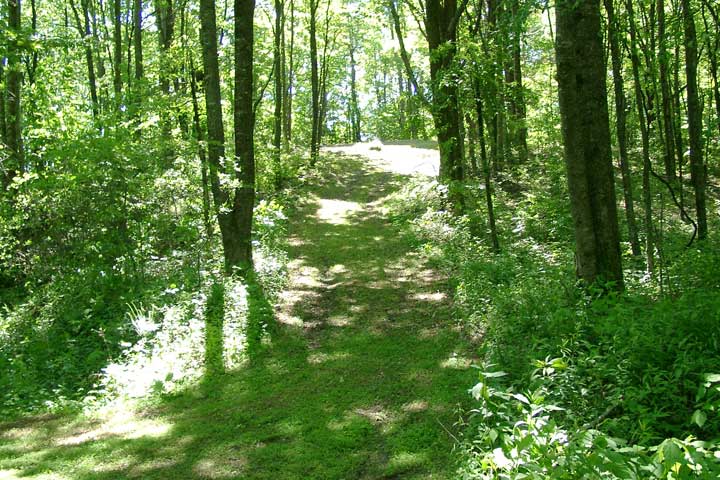
A reseeded logging road.
The shelterwood system removes trees in a series of harvests and supports the shade tolerant species that can neither compete in clearcuts nor regenerate in the shady environments of single-tree selection systems. The first cut of a shelterwood harvest leaves sufficient numbers of mature trees to provide both a seed source for regeneration and enough shade to discourage the establishment of early, fast-growing, shade-intolerant species. Once large seedlings and small saplings of the desired species are established, the mature trees or overstory is removed in a second cut and the established regeneration quickly closes in the canopy and shades out competing intolerants.
Shelterwood harvests create less visual impact than the more aggressive seed-tree and clearcut systems. Some downsides of this system are that it requires multiple trips with logging equipment into the stand which may cause additional site damage. A landowner may have to postpone income by leaving high-value residual trees behind as shelter. This can also increase the risk that residual trees can be lost to windthrow, pests or disease between cuts.
Single-Tree Selection
Single-tree selection identifies individual trees or small clusters of trees for removal on rotational intervals of 10 to 25 years. Trees are marked for removal based on maximizing stand growth and tree vigor rather than market value alone. This creates a diversified mix of tree species, ages and size classes.
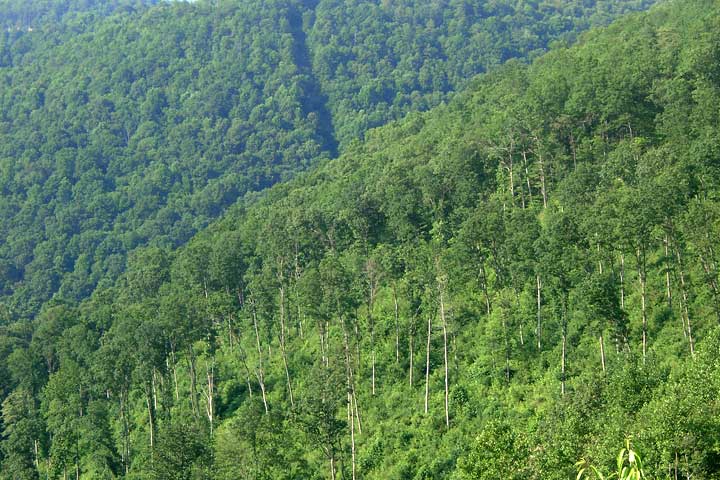
Single-tree Selection.
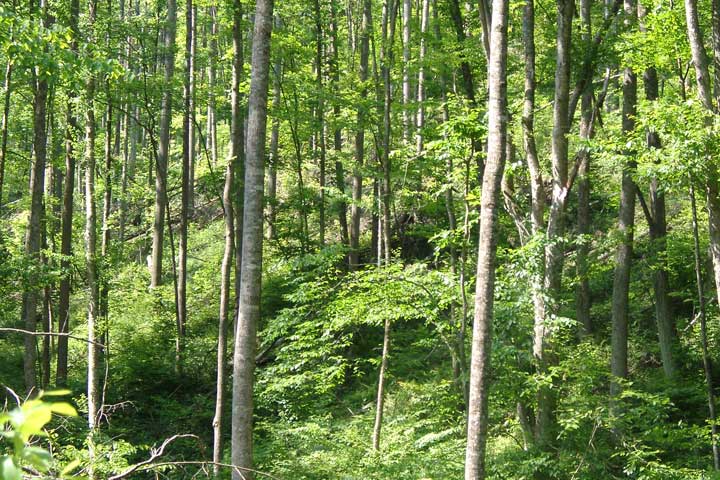
A forest that has been thinned.

Single trees marked for harvest.
Single-tree selection has the least visual impact on the forest and is considered the least objectionable method to environmentalists and preservationists. For all of its visual appeal, however, single-tree selection is not an effective tool for regenerating intermediate and shade intolerant species. Over time, single-tree selection will generally move a forest towards a less bio-diverse, late-successional, shade tolerant species.
Poor Forestry Practices
Diameter limit cutting is a common practice that many landowners and even forestry professionals employ when harvesting timber. Trees at or above a certain diameter are selected for harvest, and the smaller trees are left behind with the expectation that they will grow into merchantable trees. Unfortunately, this “take the best and leave the rest” approach removes the best growing stock and leaves genetically inferior trees as a seed source. Often, the smaller trees that are left behind never mature into larger, valuable trees. This is known as “high-grading” and over time, destroys the diversity, quality and value of the forest.
Looking Ahead
Forestry management concepts can be complex in that what seems emotionally prudent is not always the best practice for the future of the forest or for the expectations of society or industry. Proven management principles are the best hope for maintaining our forestlands.
1Research provided by the Weekly Hardwood Review, Vol.26, Issue 3, October 2, 2009.




